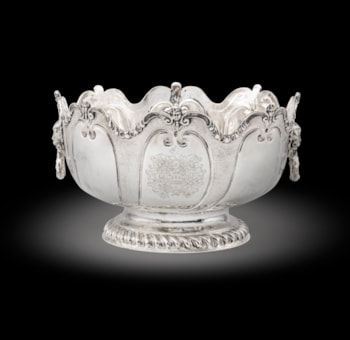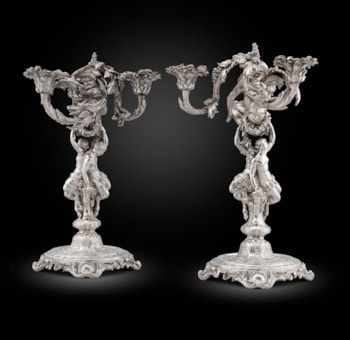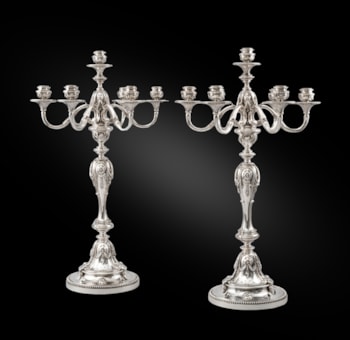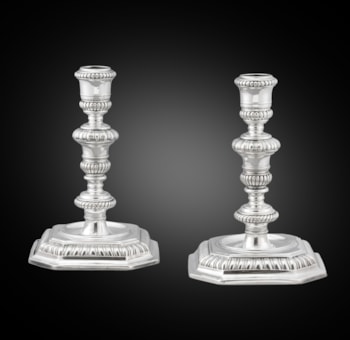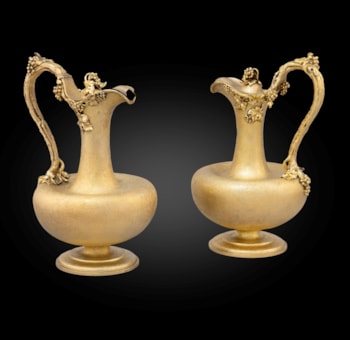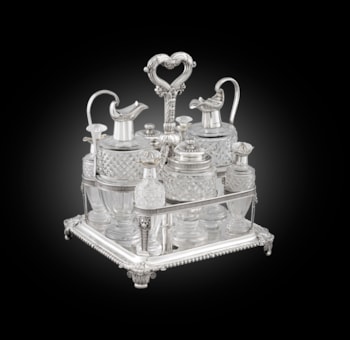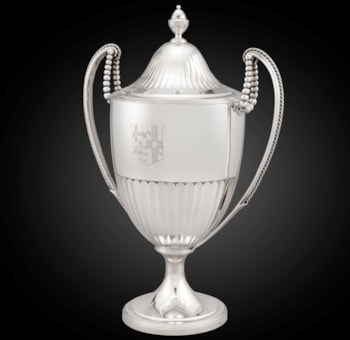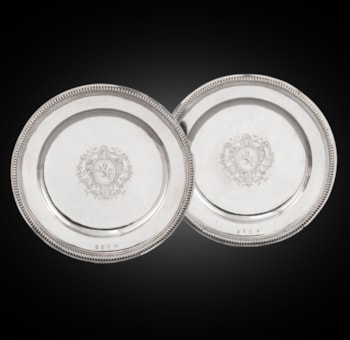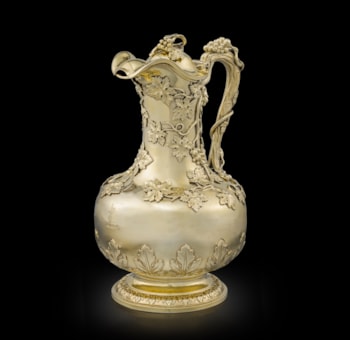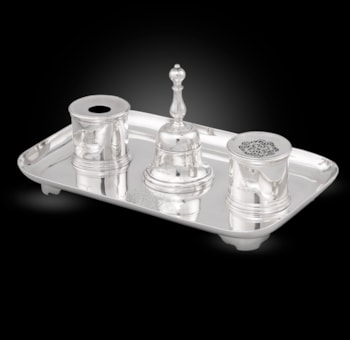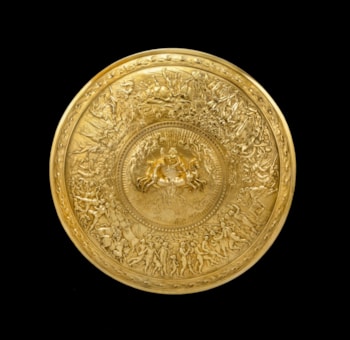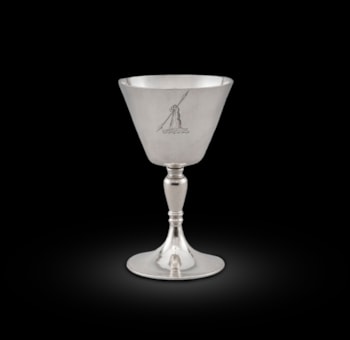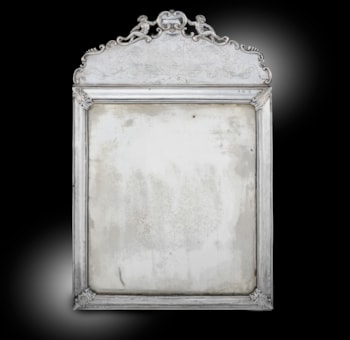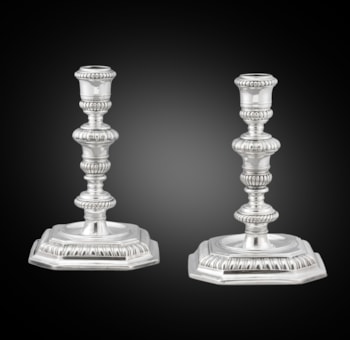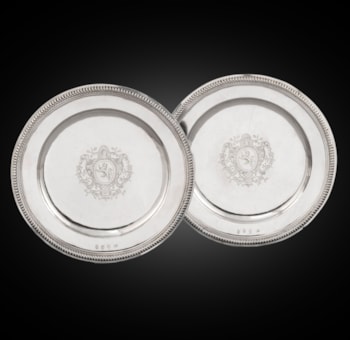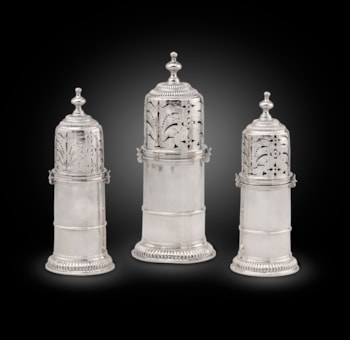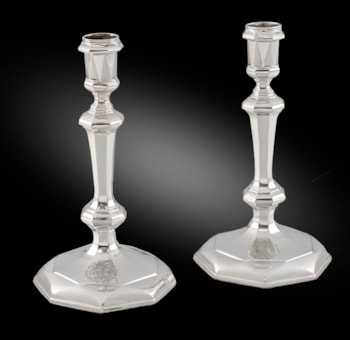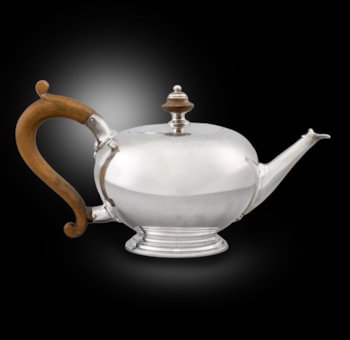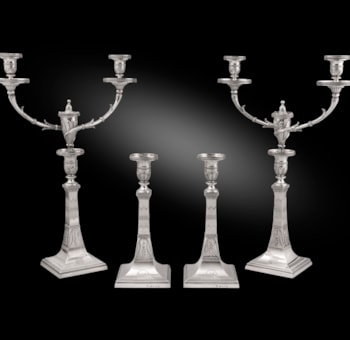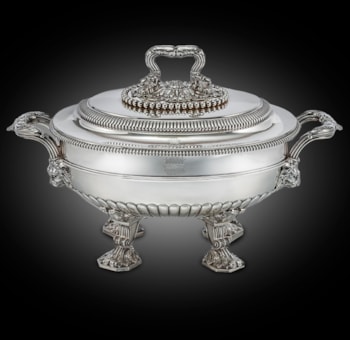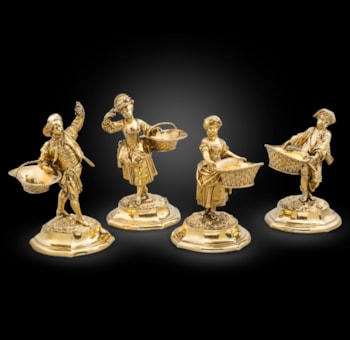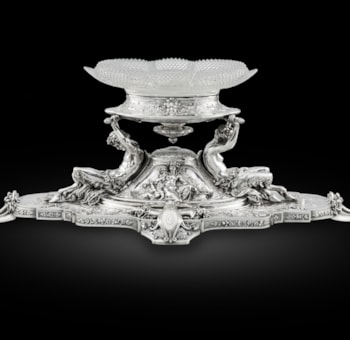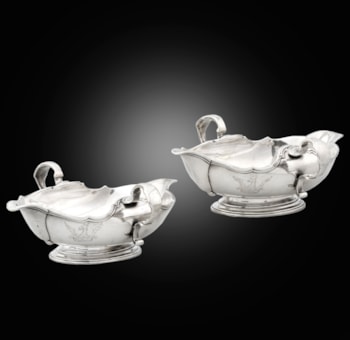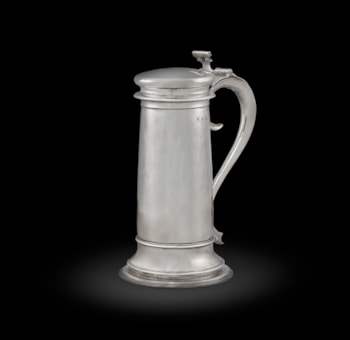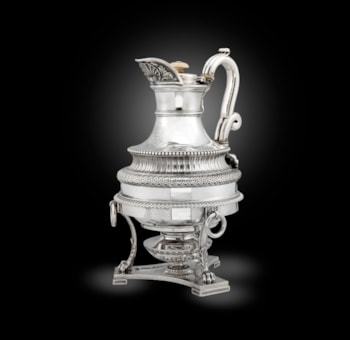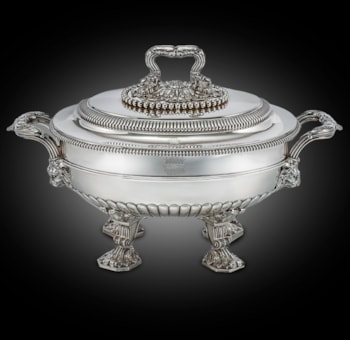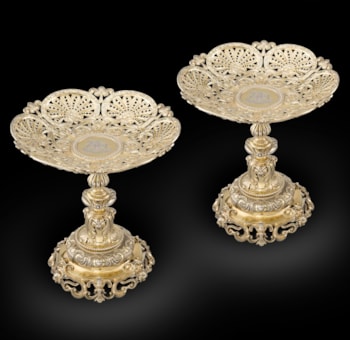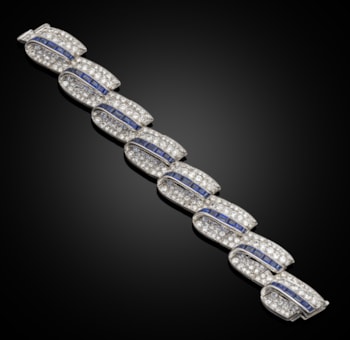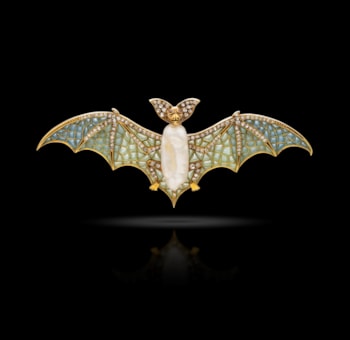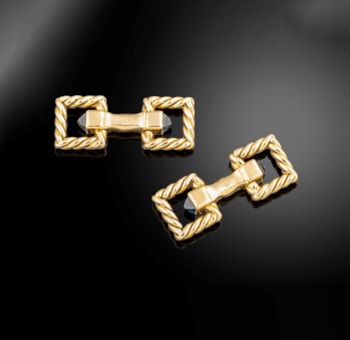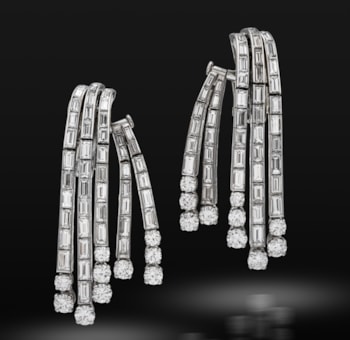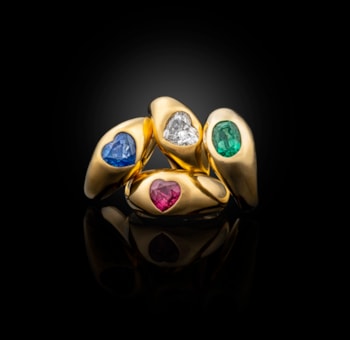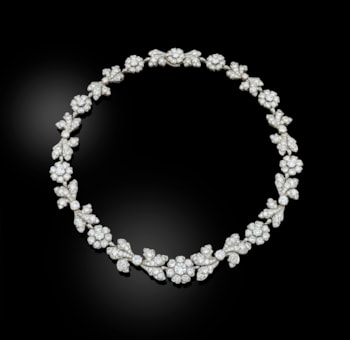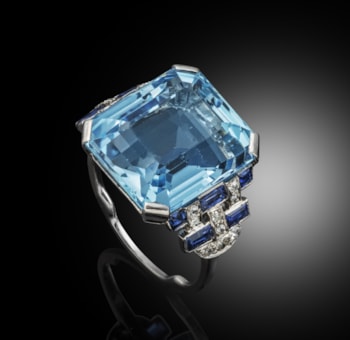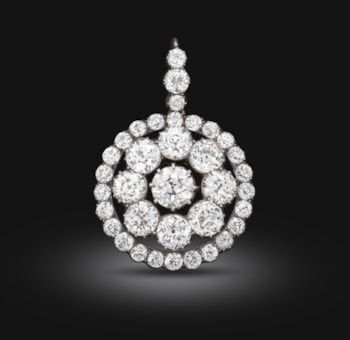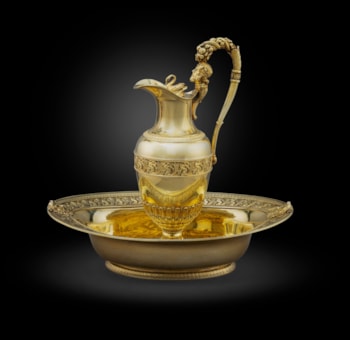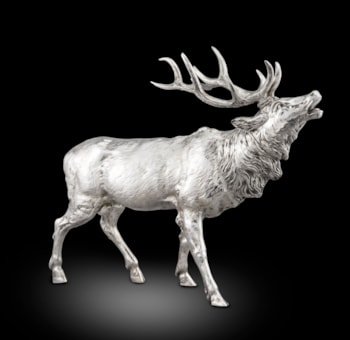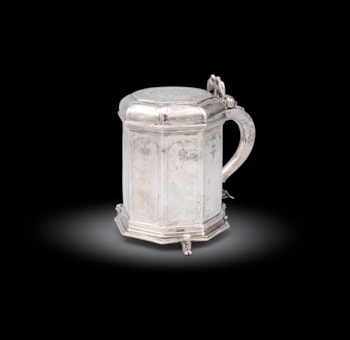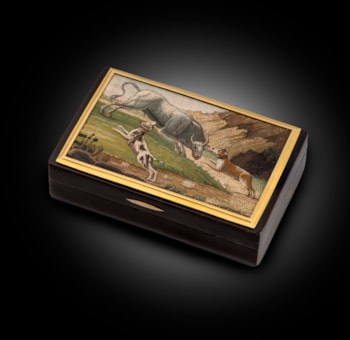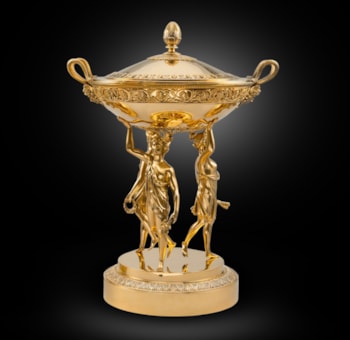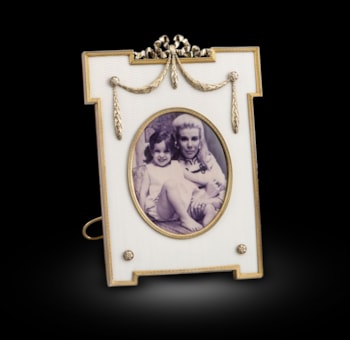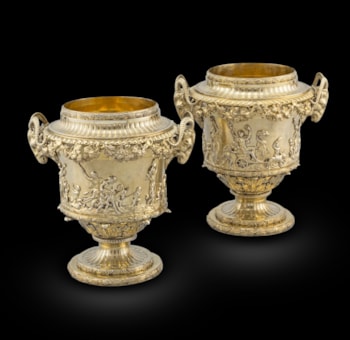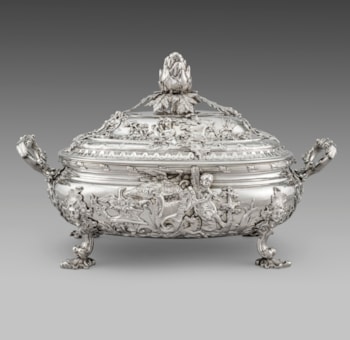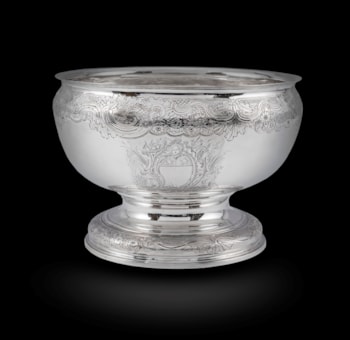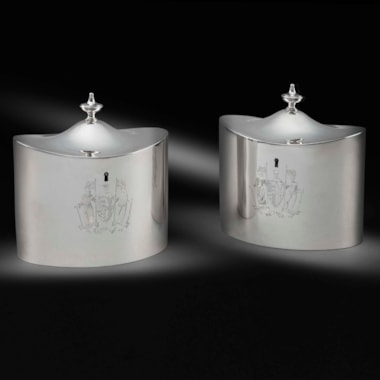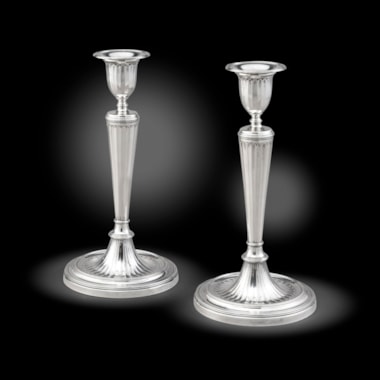The word epergne describes a type of table decoration that is known from the mid-18th century. In spite of the French sound of the term, it cannot be traced back to French origins, though the form itself seems to be inspired by French silver centrepieces. It is in fact distinctly British and largely absent from the continent.
Epergnes often consist of a central basket surrounded by smaller baskets hung on branches. These would have been filled with delicacies such as fruit or sweetmeats. This example is by Thomas Pitts, an interesting combination of Rococo scrolls, foliage and shells, with the taste for exoticism. Its overall shape is that of a Chinese pagoda, often seen in English gardens at the time. It is surmounted by a pineapple, a symbol of wealth popular in architecture and decorative art since the late 17th century. When on display at dinner, the epergne would have contained fruits and delicacies for dessert and would have sat alongside other similarly decorative ornaments such as porcelain figures and sculptures.
This form of functional and decorative centrepiece may have evolved from the practice of placing a dish of fresh or candied fruit on top of a monumental standing salt. By the mid-17th century, round or hexagonal waisted salts made with three arms could support a filled plate, but it was at the French court of Louis XlV (ruled 1643-1715) that the centrepiece was fully developed. By the 1680s the epergne (known in France as the surtout) had begun to take shape as a grand and dramatic centrepiece, which stayed on the table throughout the meal. It provided a range of services for diners from lighting to serving foods and was a flexible and adaptable table ornament. Tureens for stews and soups could be incorporated, as well as casters and cruets for condiments, salvers and baskets to present fruit or jellies, and creams. The branches could be adapted to hold candles for evening supper parties. Late 18th-century English epergnes seem to have been largely decorative centrepieces for holding fruit for the dessert course. The English adopted the French word épargne ('to save'), meaning to save space on the table, or to spare servants or guests the trouble of passing vessels, which were now more conveniently located together in the centre of the table.
Thomas Pitts was born in London and apprenticed first to Charles Hatfield and later to David Willaume, gaining his freedom in 1744. His mark, which must appear early in the missing register of 1758-1773, had previously been attributed to Thomas Powell. However, on the strength of entries in the Parker and Wakelin "Workmen's Ledgers" which list pages of epergnes by Pitts, the mark has been re-attributed (see Arthur Grimwade, London Goldsmiths 1697-1837 Their Marks and Lives, page 626).
Thomas Pitts seems to 'have specialised in epergnes and finely pierced basket-work' (M. Clayton, The Collector's Dictionary of the Silver and Gold of Great Britain and North America, Woodbridge, 1971, p. 175), and an epergne of 1762 by Pitts, with a pineapple finial similar to the present lot, is illustrated, M. Clayton, op. cit. p. 176, pl. 267. A pagoda epergne of the same date and by the same maker was sold, Mount Congreve: The London Sale; Christie's, London, 23 May 2012, lot 70. A similar but smaller epergne by Pitts, also of 1763, is in The Rosalinde and Arthur Gilbert Collection on loan to the Victoria and Albert Museum, London (museum no. LOAN:GILBERT.689:1-2008).
Throughout the 18th century ‘chinoiserie’, the European interpretation of oriental ornamentation and works of art, was highly fashionable. The style was at its peak in England from 1750 to 1765. For example, William Chambers was employed to design several buildings for Kew Gardens, one in the form of a pagoda. Chambers' plans and views of Kew were published in 1762 and perhaps influenced the combination of foliage, flowers and chinoiserie seen in this fabulous epergne.
He briefly considered becoming a cleric in the Church of England before deciding on a lifetime of travelling around Europe, engaging with religious, artistic and scientific discourse and occasionally intervening in politics.
While spending one winter in Rome in the hope that the warmer climate would help his asthma, the prince met Lady Augusta Murray, the second daughter of John Murray, 4th Earl of Dunmore and Lady Charlotte Stewart. They fell in love and were secretly married in a Church of England ceremony in Hotel Sarmiento, Rome, in the spring of 1793. As a result, the King’s minister of Hanover affairs was sent to Italy to discreetly escort Augustus Frederick back to London.
Back in London, the couple married again without revealing their true identities at St George’s, Hanover Square, in December of the same year. Both marriages took place without either the knowledge or consent of the king. As a result, the Prerogative Court annulled the marriage in 1794, arguing that it contravened the Royal Marriages Act of 1772, which required that royal marriages be approved by the king.
Lady Augusta and Augustus Frederick had two children, daughters named Augustus Frederick d’Este and Augusta Emma. Though they originally took the surname Hanover, they later used d’Este, which was a family both of their parents were descended from.
The couple continued to live together until 1801. The same year, King George III created for his son the Dukedom of Sussex, Earl of Inverness, and Augustus Frederick received a parliamentary grant of £12,000. The couple separated, and Lady Augusta retained custody of the children and maintenance from the Duke of £4,000 a year.
After Lady Augusta died in 1830, the Duke married Lady Cecilia Underwood, the daughter of Arthur Gore, 2nd Earl of Arran. The marriage took place at Great Cumberland Place in the summer of 1831, and again contravened the Royal Marriages Act, meaning it was legally void.
Lady Cecilia assumed the name ‘Underwood’, her mother’s maiden name, by Royal Licence.
When heiress to the throne Princess Charlotte of Wales ran away from her father to join her mother at Connaught House, she pleaded with her uncle, the Duke of Sussex, to help her. Though the Princess claimed that she wanted to escape her father’s harsh treatment, the Duke had no legal right to stop her from being forcibly returned home.
The Duke wrote a letter to the Prime Minister, Lord Liverpool, which demanded to see his niece and complained of her confinement at Carlton House. Later the same year, the Duke publicly addressed Lord Liverpool in the House of Lords, asking that Charlotte be allowed to see her friends, have personal liberty and go sea-bathing, which had been recommended for her health.
This had the desired effect: Charlotte was allowed to rise in Windsor Park and was sent to Weymouth for her health. However, the Duke’s involvement in his niece’s affairs led to the deterioration of the relationship between the Duke and his brother George.
The Duke was politically ahead of his time, calling for the abolition of the slave trade and the removal of civil restrictions on Jews. Indeed, he was the first ever royal to be the patron of a Jewish charity, after he was impressed by the work in helping Jewish children and families living with disabilities at The Jews’ Hospital and Orphan Asylum (now called Norwood), of which Queen Elizabeth II was a patron.
He was also president of the Society of Arts from 1816 until his death, and president of the Royal Society between 1830 and 1838. He took a keen interest in biblical studies and the Hebrew language, with his library containing some 50,000 theological manuscripts, some of which were in Hebrew.
In 1838, he introduced the scientist John Herschel in a meeting and gave a speech about the compatibility of science and religion.
Towards the end of the Duke’s life, he became known for his close relationship with his niece, Queen Victoria. He and his wife lived in apartments at Kensington Palace, and in the absence of her own father, gave her away at her wedding to Prince Albert in 1840.
H.R.H. Prince Augustus Frederick, Duke of Sussex (1773-1843), sold,
The Late Royal Highness the Duke of Sussex, K.G.; Christie's London, 27 June 1843, lot 549.
Possibly acquired by William Townley Mitford (1817-1889), of Pitshill, Sussex, by decent to,
Captain William Slade Mitford (1898-1966), of Pitshill, Sussex, sold,
The Will Trust of the late Captain W. S. Mitford; Christie's London, 27 November 1974, lot 86.
Mrs. Elizabeth L. Harris (1922-1990), daughter of Captain W. S. Mitford, by descent, until sold,
Property of a Gentleman; Christie's, London, 12 June 2006, lot 114.
An Adventurous Spirit: An Important Private Collection Sold to Benefit a Charitable Foundation; Christie's, London, 13 December 2018, lot 170.
Son of Thomas Pitts of the Parish of St. Mary Whitechapel, apprenticed to Charles Hatfield 6 December 1737 and turned over to David Willaume (II) February 1742. Free, 16 January 1744. The mark now attributed here to him must have been entered not long after the start of the missing register of 1758-73, and he appears as plateworker, Air Street, St.James's, in the Parl. Report list 1773. Heal records him as working silversmith and chaser, Golden Cup, 20 Air Street, Piccadilly, 1767-93. The 'Workmen's Ledgers' of Parker and Wakelin (Garrard MSS., Victoria & Albert Museum) contain many pages of accounts from Pitts for epergnes from 1766, from which the identification of the mark, formerly attributed to Thomas Powell, in absence of any other evidence was natural enough. His three sons, Thomas, William and Joseph were all apprenticed to him in Air Street, 1767, 1769 and 1772. It is interesting to note that Joseph was apprenticed to his father and turned over the same day to Philip Day plate casemaker and leatherseller and described as plate casemaker on attaining his freedom in 1781. The continuous need for cases for the output of epergnes and centrepieces must have led to a close connection with Day probably a desire to have a member of the family sharing in the business arising.
You May Also Like




